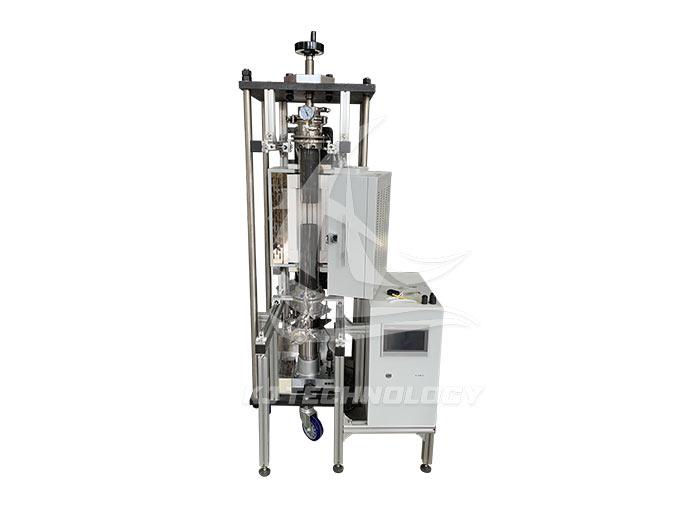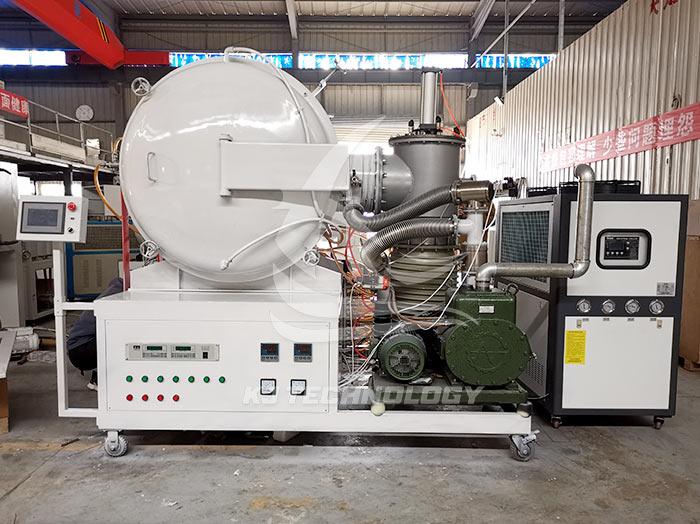What metals can be processed by metal heat treatment furnaces?
 08-12-2025 Author: KJ technology
08-12-2025 Author: KJ technology
Metal heat treatment furnaces can handle a wide range of metal materials, including ferrous metals, non-ferrous metals, and their alloys, as follows:
1. Black metal
ferrous material
Carbon steel and alloy steel: hardness, strength, and toughness are adjusted through processes such as quenching, normalizing, annealing, and tempering. For example, the hardness of tool steel is significantly increased after quenching, and the comprehensive mechanical properties of gears can be obtained through quenching and tempering treatment (quenching+high-temperature tempering).
Stainless steel: Solid solution treatment is carried out in a controlled atmosphere or vacuum furnace (heated to 1050-1150 ℃ and quickly cooled) to eliminate carbide precipitation and improve corrosion resistance.
cast iron
Gray cast iron: Stress relief annealing (500-650 ℃ insulation followed by slow cooling) is used to eliminate internal stresses during casting and prevent cracking.
Ductile iron: Normalized treatment (850-900 ℃ insulation and air cooling) refines pearlite, improves strength and wear resistance.
2. Nonferrous metals and their alloys
Aluminum and aluminum alloys
Solution treatment+aging treatment (T6 process): Heat the aluminum alloy to 450-500 ℃ for insulation, then quench it with water and age it at 120-180 ℃ to significantly improve its strength and hardness. For example, the tensile strength of aviation aluminum alloy 7075 after T6 treatment can reach over 570MPa.
Annealing treatment: eliminates work hardening, restores plasticity, and facilitates subsequent molding.
Copper and copper alloys
Annealing: Reduce the hardness after cold processing and improve conductivity. For example, the conductivity of copper can be restored to over 95% IACS after annealing.
Aging strengthening: For example, beryllium bronze can be rapidly cooled after solid solution treatment (780-820 ℃), and then aged at 300-350 ℃ to achieve a hardness of 38-42 HRC.
Titanium and titanium alloys
Annealing: eliminates processing stress and stabilizes the structure. For example, after annealing at 750 ℃, the tensile strength of TC4 titanium alloy can reach 900-1100MPa.
Solution treatment+aging treatment: improves high-temperature strength and corrosion resistance, widely used in aircraft engine blades.
Magnesium and magnesium alloys
Annealing: Eliminating casting or extrusion defects and improving plasticity. For example, after annealing at 350-400 ℃, the elongation of AZ31 magnesium alloy can be increased to 15% -20%.
Artificial aging: Improve strength, for example, after aging treatment at 160 ℃, the tensile strength of ZK60 magnesium alloy can reach over 350MPa.
3. Special metal materials
Nickel base superalloy
Solution treatment+aging treatment: Improve high-temperature strength and creep resistance. For example, after solution treatment at 980 ℃ and aging treatment at 720 ℃, Inconel 718 alloy can achieve a tensile strength of 1100MPa at 650 ℃.
cobalt-base alloys
Annealing: Eliminating work hardening and improving wear resistance. For example, after annealing at 1150 ℃, the hardness of Stellite 6 cobalt based alloy can reach 40-45 HRC.
Precious metals (gold, silver, etc.)
Annealing: Eliminating cold working stress and restoring ductility. For example, after annealing at 600 ℃, the elongation of gold can be increased to over 40%, making it easy to process into jewelry or electronic components.
4. Metal based composite materials
Particle reinforced aluminum based composite materials: By adjusting the interface bonding between the matrix and the reinforcing phase through heat treatment (such as T6 process), the strength and wear resistance are improved. For example, SiC particle reinforced aluminum based composite materials can achieve a tensile strength of over 600MPa after heat treatment.
5. The correlation between processing technology and metal properties
Quenching: Rapid cooling forms martensite, significantly improving hardness and strength, but may increase brittleness.
Tempering: Eliminating quenching stress and adjusting the balance between hardness and toughness.
Solution treatment: Dissolve solute atoms into the matrix to prepare for subsequent aging strengthening.
Time treatment: precipitation of strengthening phase to enhance strength and hardness.
Annealing: Eliminating internal stress, improving processing performance, or restoring plasticity.








